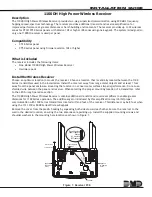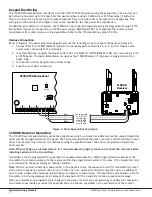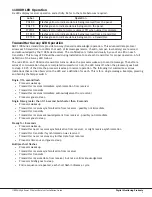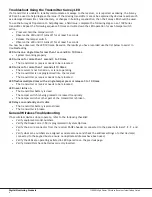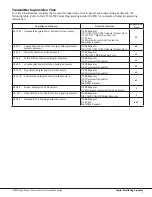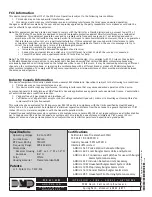
Digital Monitoring Products
1100DH High Power Wireless Receiver Installation Guide
2
Keypad Bus Wiring
The 1100DH Wireless Receiver interfaces with the XT30/XT50 Series panels using the keypad bus. The receiver can
be hard-wire mounted up to 100 feet from the panel enclosure using 22 AWG wire or 250 feet using 18 AWG wire.
This wire run must be a home run to the panel separate from wire runs to other devices on the Keypad Bus. This
wiring restriction is due to the higher current draw needed for the high power RF amplification.
If additional wire distance is required, the 1100DH can be connected anywhere along the Keypad Bus through a 710
Bus/Splitter module and powered by a 12VDC power supply (DMP Model 505-12) to separate the receiver power
requirements from other devices on the Keypad Bus. Refer to the 710 Installation guide (LT-0310).
Harness Connection
Refer to Figure 2, the panel programming guide and use the following steps to connect the panel and receiver:
1. Connect from the 1100DH PANEL terminal to the panel keypad bus terminals 7, 8, 9, and 10. Observe wire
colors when connecting to the terminals.
2. In System Options, program the House Code (1-50). Set BUILT IN 1100 WIRELESS to NO if you are using it with
an XT50 panel. The panel immediately recognizes the 1100DH Receiver if the panel is programmed with a
house code.
3. In Zone Information, program the wireless zones.
4. Snap the cover back on the unit.
Black
Green
Yellow
Red
J4
RED
PRO
J8
XT30/XT50 Series Panel
J7
RJ SUP
AC
1
2
3
4
5
6
7
8
10
11 12
9
+B
BELL GND
SMK
RED YEL GRN BLK
AC
-B
1100DH
Receiver
U10
U11
1
TO PANEL
Panel Receive
Panel Transmit
Status
RF Receive
RF Transmit
1
U8
Y1
L17
1
Can be extended
up to 100 feet
from the panel
using 22 AWG
or 250 feet
using 18 AWG
1100DH Receiver Operation
The 1100DH receiver automatically sends the panel house code to wireless transmitters when the unique transmitter
serial number is programmed into the panel. The house code identifies the panel, receiver, and transmitters to each
other. The receiver only listens for transmissions using the specified house code and/or programmed transmitter
serial number.
Note: When setting up a wireless system, it is recommended to program zones and connect the receiver before
installing batteries in the transmitters.
Transmitters can be programmed for supervised or unsupervised operation. When programmed as supervised, the
transmitter must communicate with the receiver within the programmed number of minutes. If the transmitter fails
to communicate, the panel displays a missing condition.
Note: When a receiver is installed, powered up, or the panel is reset, the supervision time for transmitters is reset.
If the receiver has been powered down for more than one hour, wireless transmitters may take up to an additional
hour to send a supervision message unless tripped, tampered, or powered up. This operation extends battery life for
transmitters. A missing message may display on the keypad until the transmitter sends a supervision message.
When any wireless zone programming is changed in the panel, receiver zone programming is updated. At that point,
all wireless zones display as normal for approximately one minute, regardless of the actual state of the contact.
Figure 2: Panel Keypad Bus Connection

